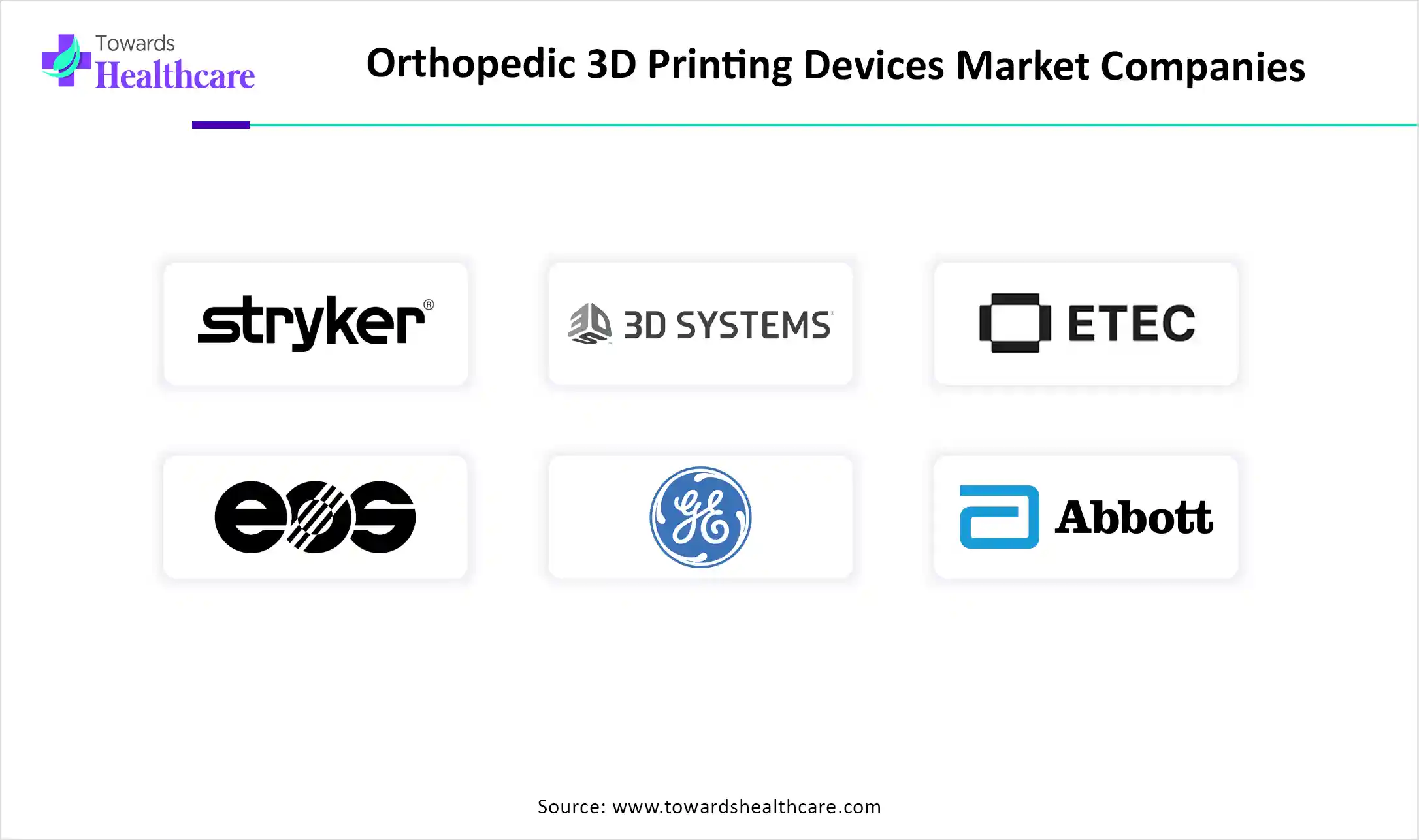

The orthopedic 3D printing devices market size is calculated at US$ 2.48 billion in 2024, grew to US$ 2.75 billion in 2025, and is projected to reach around US$ 6.87 billion by 2034. The market is expanding at a CAGR of 11.24% between 2025 and 2034.
To drastically lower revision surgeries and long-term expenses, customized solutions are gradually taking the place of one-size-fits-all devices. Surgeons can practice intricate procedures using CT-derived anatomical models, which increases precision and confidence. This method facilitates the treatment of complex deformities and trauma cases that traditional implants are unable to adequately address while also increasing patient comfort and mobility. International adoption is accelerating as long-term cost savings are also becoming apparent to insurers and healthcare systems.
The orthopedic 3D printing devices market is changing due to the use of advanced materials like biodegradable polymers, PEEK, and titanium alloys. These materials encourage osseointegration and natural bone regeneration in addition to offering strength and durability. Biodegradable implants don't require further surgery because they can be safely dissolved after healing is finished. Patient safety is being improved, and wider clinical acceptance is being fueled by this innovation.
Research and development (R&D) in the orthopedic 3D printing devices market is concentrated on developing patient-specific implants, advancing additive manufacturing methods, and improving biomaterials. Lightweight, strong, and biocompatible materials like PEEK, titanium alloys, and bioresorbable polymers are the focus of efforts. Incorporating AI into surgical planning, robotic-assisted printing, and next-generation technologies like bioprinting for cartilage and bone scaffolds and tissue regeneration are further innovations.
Key Players: include 3D Systems, Stryker, Zimmer Biomet, DePuy Synthes (Johnson & Johnson), and Axial3D.
The safety, structural soundness, and functionality of 3D-printed implants under load-bearing circumstances are assessed in clinical trials and validations. To guarantee device safety, efficacy, and adherence to medical standards, regulatory agencies like the FDA (United States), EMA (Europe), and CDSCO (India) supervise approvals. Surgical guides, biocompatible materials, and implants customized for each patient are covered by these approvals.
Key Players: include 3D Systems, Stryker, Lima Corporate, Exactech, and DePuy Synthes.
In the market for orthopaedic 3D printing, patient support focuses on helping patients, surgeons, and hospitals achieve the best results. These services include digital workflows for implant design, post-operative guidance, instructional materials for implant use, and pre-operative planning tools. To guarantee prompt delivery, companies also offer hospital-based point-of-care solutions, quality certifications for implants, and training programs for surgeons. Enhancing access to surgical planning and customized implants in developing areas is the main goal of outreach programs.
Key Players: include 3D Systems, Stryker, Zimmer Biomet, Axial3D, and LimaCorporate.
Become a valued research partner with us, please feel free to contact us at sales@towardshealthcare.com